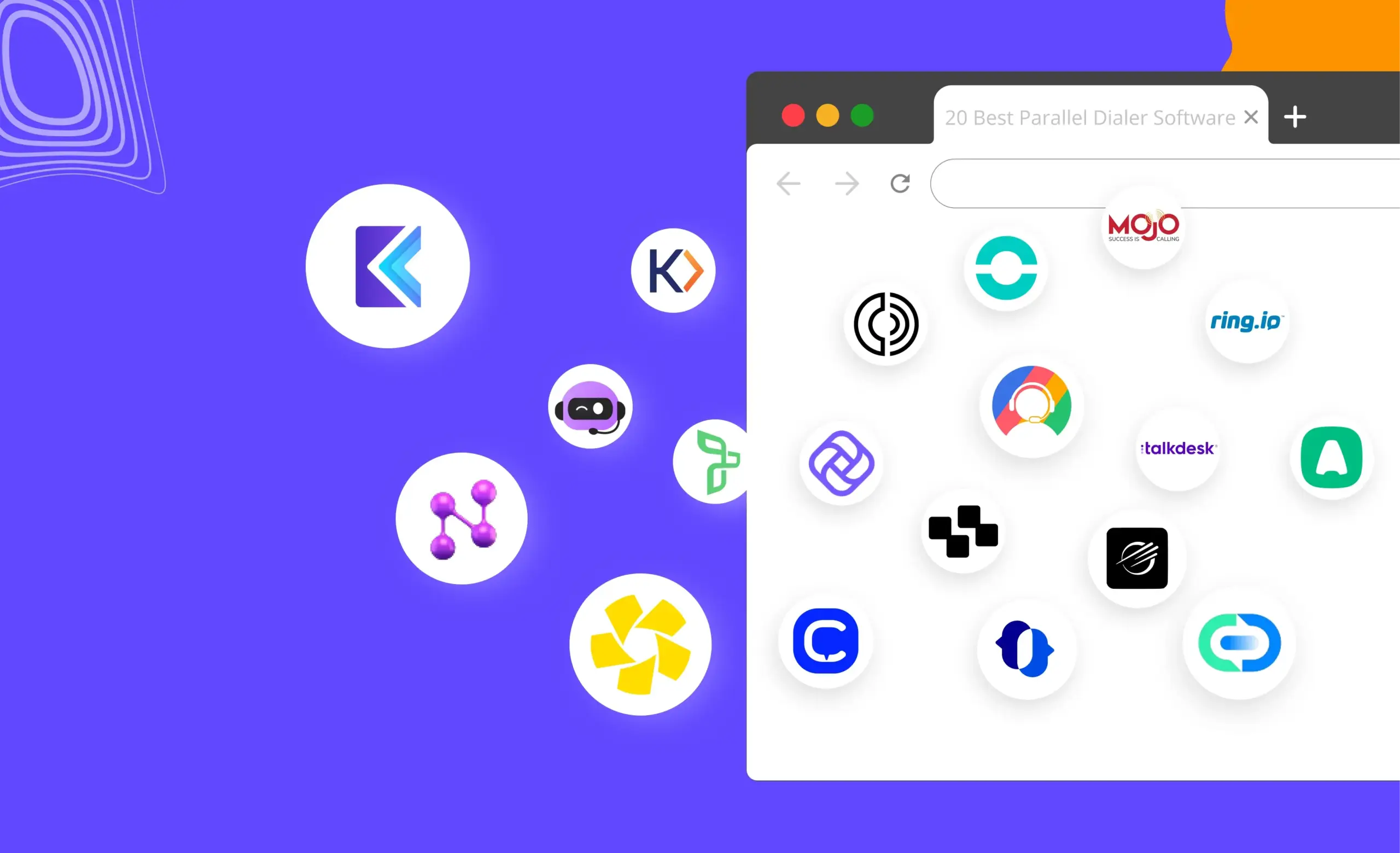Sales calls are packed with crucial information: from uncovering pain points to handling objections and defining follow-up steps. But let’s face it, without proper attention to detail, it’s easy for critical information to get lost. Relying on memory or incomplete notes leaves your team vulnerable to missed opportunities and frustrated prospects. Reps are left manually replaying calls, trying to catch key moments—a process that’s time-consuming and prone to errors.
This lack of precision leads to larger issues like missed follow-ups, unclear next steps, and incomplete reporting. Managers struggle to evaluate performance, and reps waste valuable time sorting through hours of recordings. Worst of all, deals slip through the cracks due to the inability to effectively review and act on key conversations.
That’s where call transcription comes in. By converting conversations into written text, sales teams can quickly access important details, improve performance, and enhance decision-making. This isn’t just about converting words to text; it’s about smarter, data-driven selling. In this blog, we’ll explore how call transcripts can enhance your sales process—from coaching to tracking performance and more.
What is Call Transcription?
Imagine being able to instantly recall every detail from a sales call without having to replay hours of audio. Call transcription makes this possible by converting spoken conversations into written text, allowing easy access to and review of discussions from sales calls, customer support interactions, or internal meetings.
With advancements in Artificial Intelligence (AI) and Natural Language Processing (NLP), modern transcription tools do much more than just capture words. They understand context, identify key phrases, and even analyze sentiment, helping you uncover objections, next steps, and the emotional tone of the conversation in real-time.
How Salespeople Can Leverage Call Transcriptions
Call transcripts are more than just a reference. They’re a powerful tool to help you sharpen your skills, improve processes, and track your team’s performance. Let’s dive into the key ways call transcriptions can supercharge your sales efforts:
1. Sales Coaching and Training
Call transcripts provide a window into your team’s strengths and weaknesses. Managers can review how reps handle objections, deliver pitches, or close deals—all without having to replay entire calls. By focusing on specific sections of a transcript, you can deliver targeted feedback that helps reps improve faster and more effectively. This turns coaching into a data-driven activity that saves time and improves outcomes.
2. Refining Sales Scripts
Call transcripts offer real-world insights into what works—and what doesn’t—during sales conversations. Are reps struggling with the introduction? Are they addressing the prospect’s pain points effectively? By analyzing multiple transcripts, you can fine-tune your sales scripts based on what resonates with your audience. The ability to search for common objections or successful phrases makes it easier to tweak your messaging for maximum impact.
3. Tracking Conversations and Commitments
When you’re juggling multiple prospects, keeping track of every conversation is a challenge. Call transcripts make it easy to search for specific details like follow-up steps, competitor mentions, or key commitments. This ensures you never miss an important point, streamlining your follow-ups and improving your overall efficiency.
4. Performance Review and Accountability
Transcripts give managers a clear view of how well reps are sticking to the script and engaging with prospects. Rather than relying on memory or vague feedback, managers can review exact moments in the conversation. This leads to more accurate performance evaluations and greater accountability, as sales reps can be measured against their actual conversations rather than perceptions.
5. Sentiment Analysis
With AI-driven sentiment analysis, call transcripts don’t just capture the words—they reveal the emotional tone of the conversation. Was the prospect enthusiastic or hesitant? Sentiment analysis helps reps tailor follow-up messaging to match the mood of the conversation, increasing the likelihood of closing deals. It also helps sales leaders better understand the emotions driving their customers’ decisions.
How Can You Transcribe Calls Effectively Using Dial IQ?
Dial IQ by Klenty is a robust dialing solution designed to help sales teams scale their calling efforts and generate more meaningful sales conversations. Beyond just offering powerful dialing options like Power Dialer and Parallel Dialer, Dial IQ provides advanced call transcription features that enhance the effectiveness of every sales interaction.
Here’s how Dial IQ’s transcription capabilities empower sales teams:
1. Real-Time Transcription with Actionable Summaries
With live transcription, Dial IQ allows you to capture and document important information as the call unfolds. Reps don’t need to worry about remembering every detail—real-time summaries provide key highlights throughout the call. Once the call ends, actionable next steps and insights are generated automatically, helping sales teams follow up with prospects effectively and ensuring no critical points are missed.
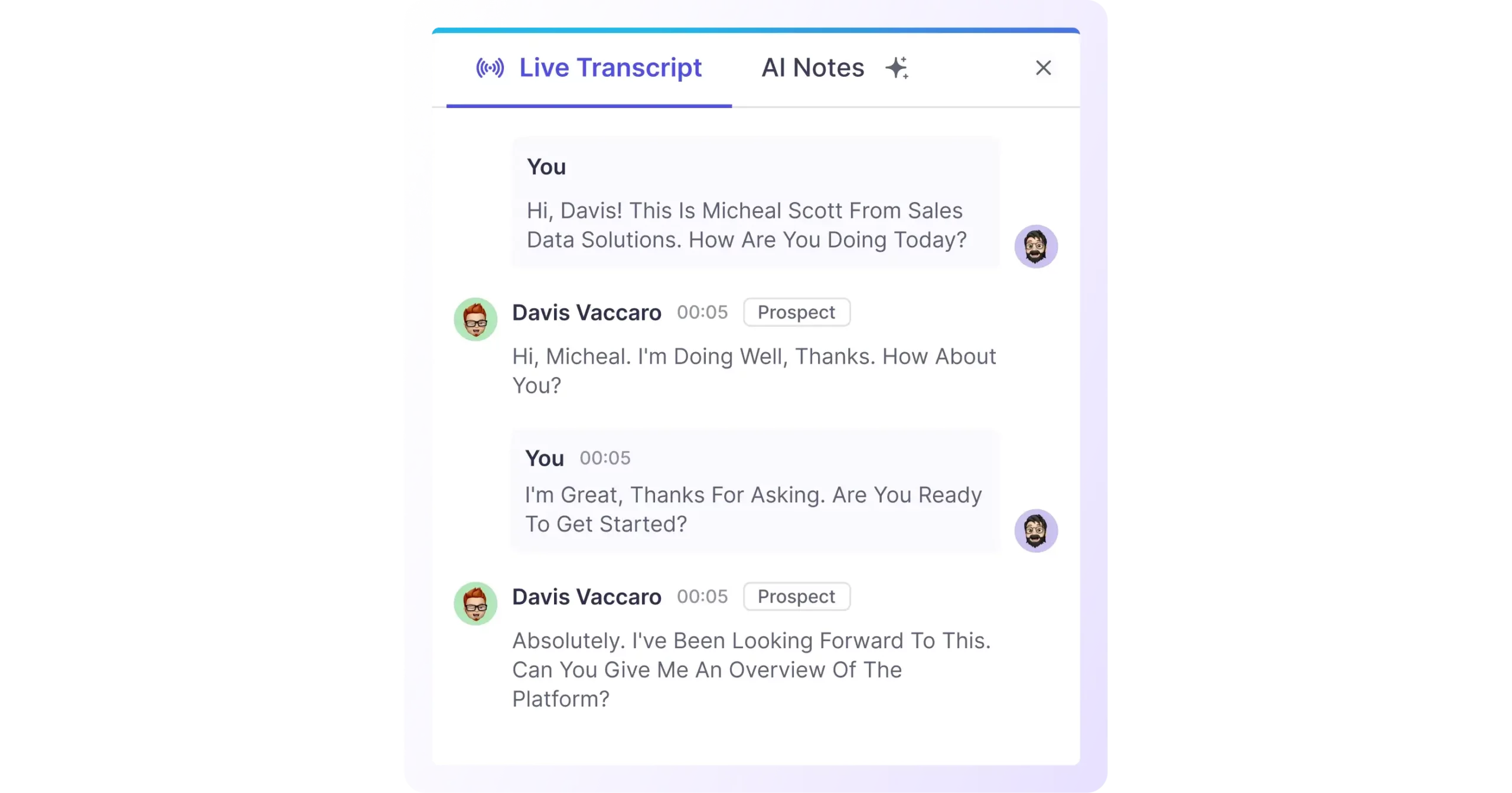
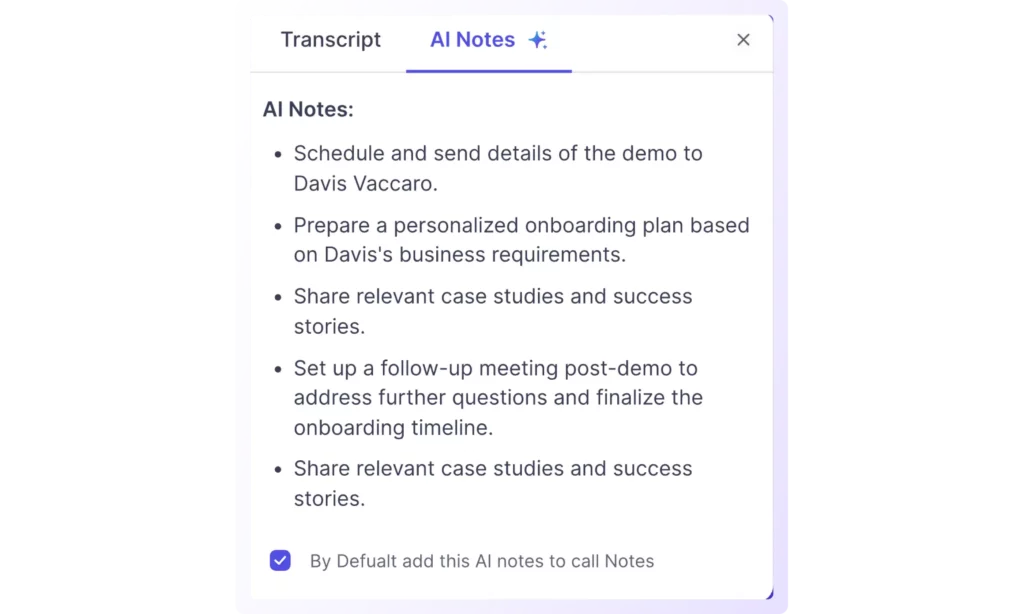
2. AI-Driven Accuracy with Contextual Understanding
Dial IQ utilizes AI-powered models that go beyond simple transcription. It breaks down calls into meaningful sections, identifying introductions, objections, or next steps with high accuracy. By understanding the context of each conversation, the AI ensures that the insights you gather are specific and useful for decision-making. This contextual understanding enables reps to refine their approach based on the nuances of each interaction.
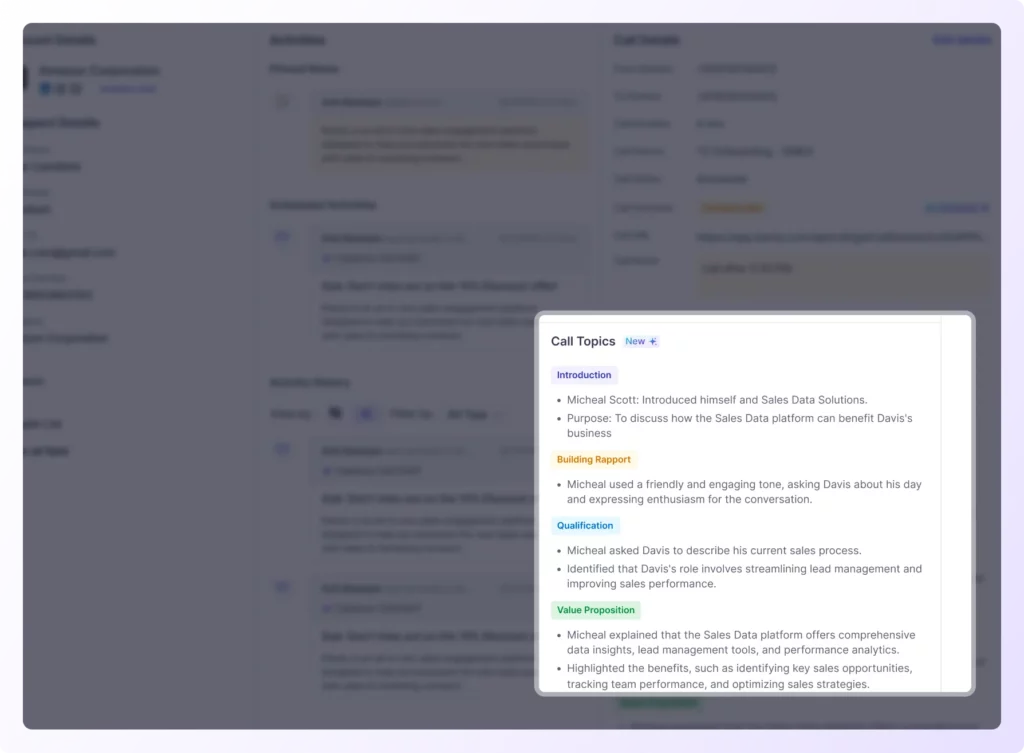
3. Customizable Prompts and Reporting
One of Dial IQ’s standout features is its ability to customize transcription prompts. Sales teams can define specific topics for the AI to extract—such as whether the contact is a decision-maker or the level of interest expressed. This customizable functionality ensures that sales reps gather relevant data quickly, leading to more targeted and effective follow-ups. Additionally, the comprehensive reporting helps track critical information, making it easier to analyze conversations at scale.
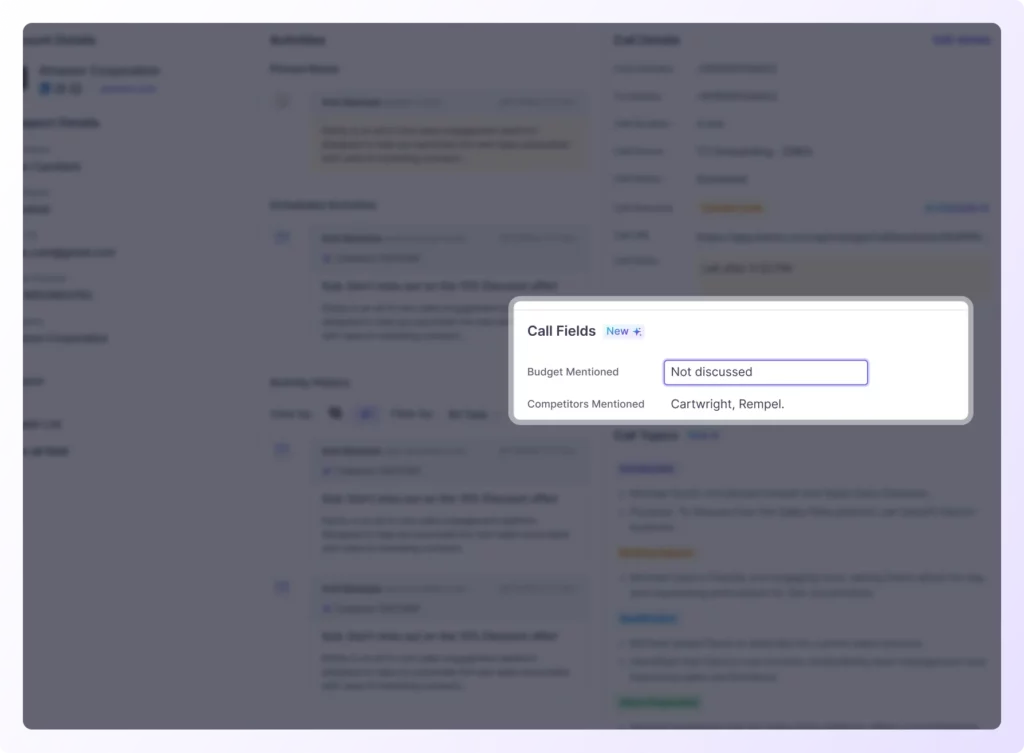
4. Key Call Metrics and Insights
Dial IQ doesn’t just transcribe calls—it provides in-depth call metrics that give you a deeper understanding of every conversation. Metrics like talk-time ratios, minute-by-minute summaries, and sentiment analysis offer a clear view of how your calls are progressing. By using AI to track key questions, action items, and customer sentiment, sales teams can identify areas for improvement and adjust their strategies for better engagement.
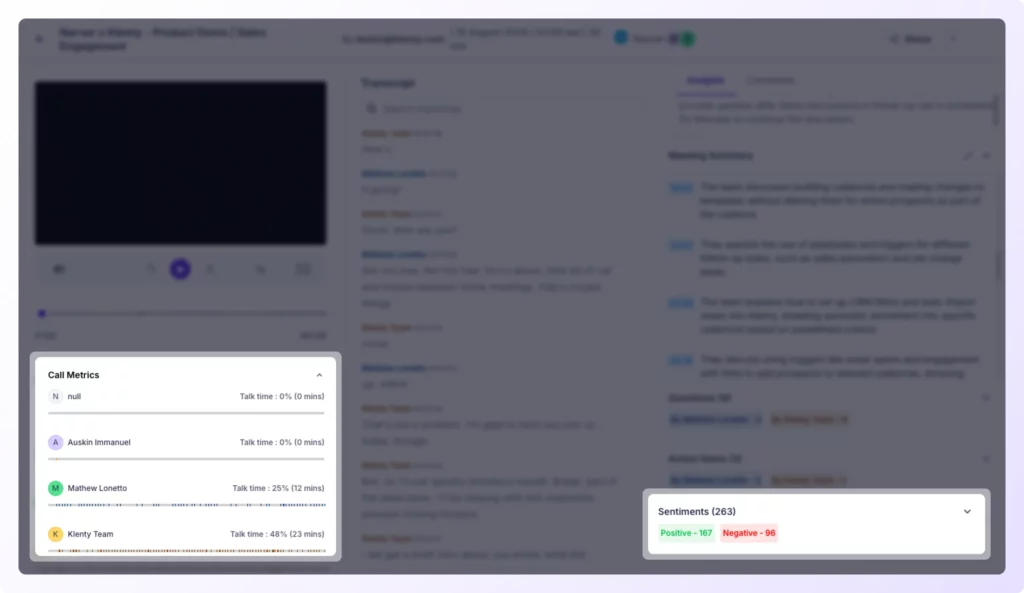
Conclusion
Dial IQ’s transcription features are more than just a convenience—they’re a strategic asset for sales teams looking to enhance their sales conversations. With real-time insights, accurate contextual analysis, and actionable metrics, you can ensure that every sales call contributes to improved performance and stronger customer relationships.
Schedule a demo today and see how Dial IQ can make every call productive without any manual work.


